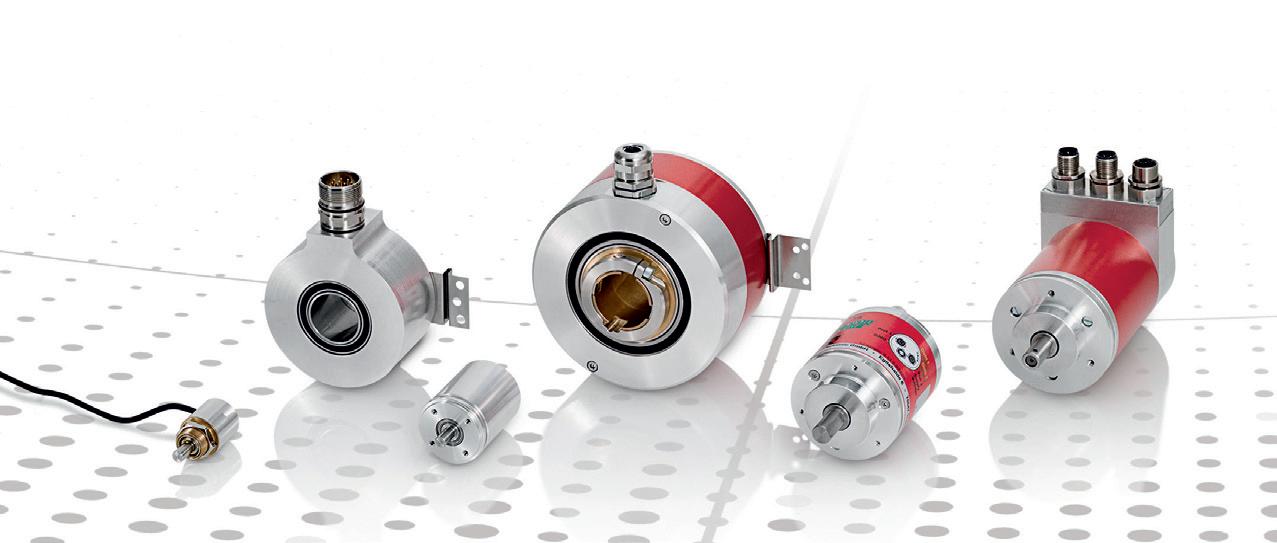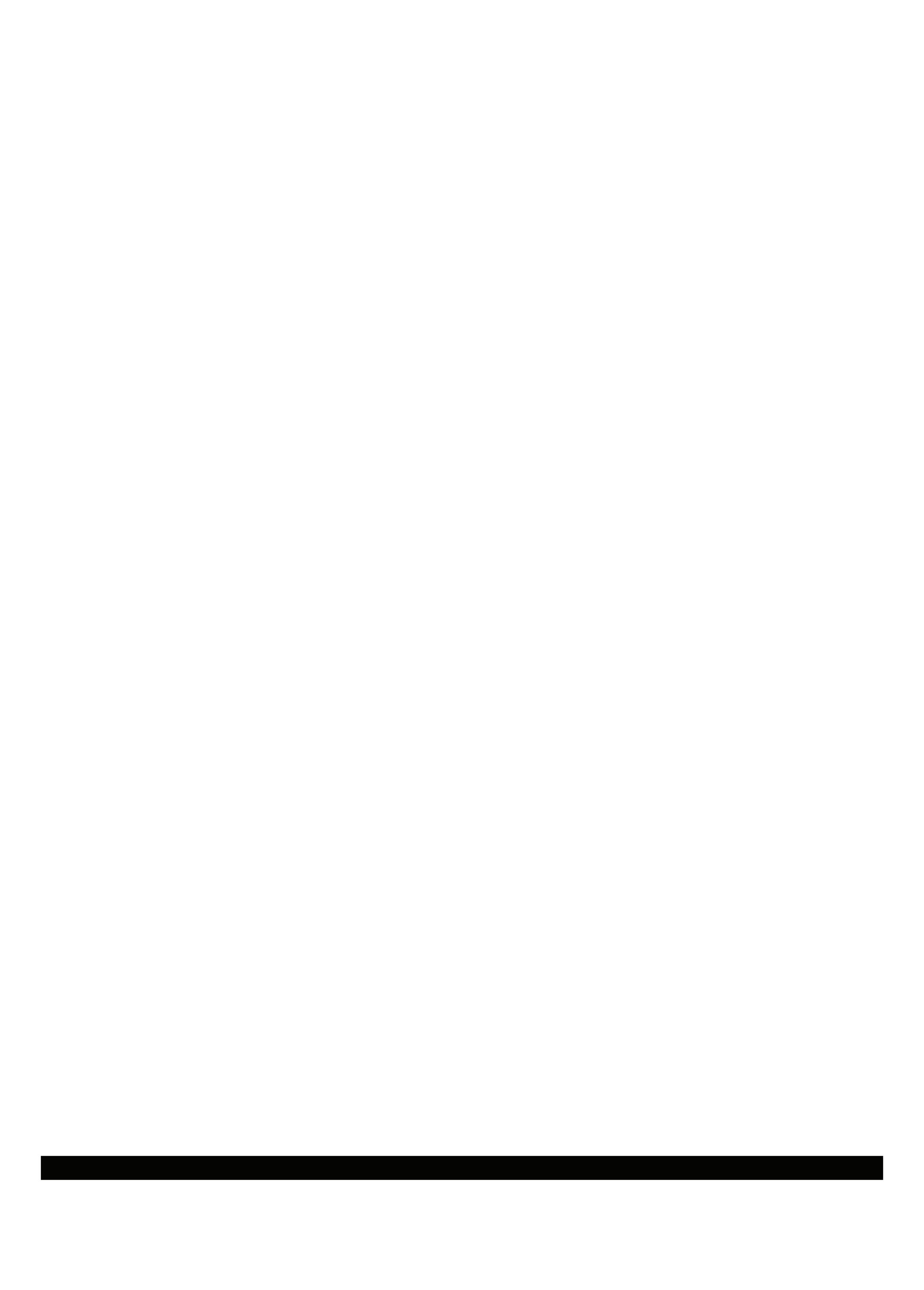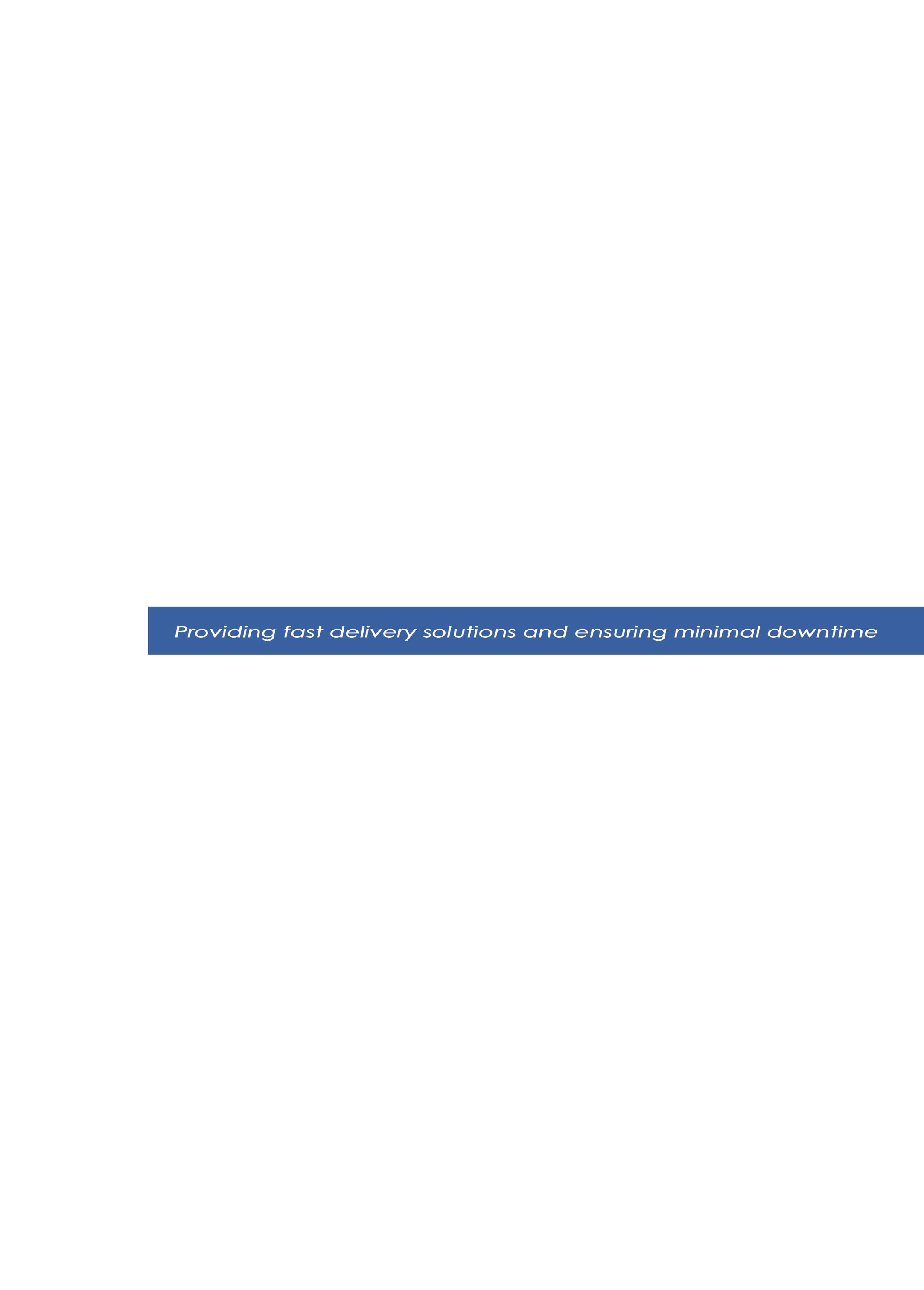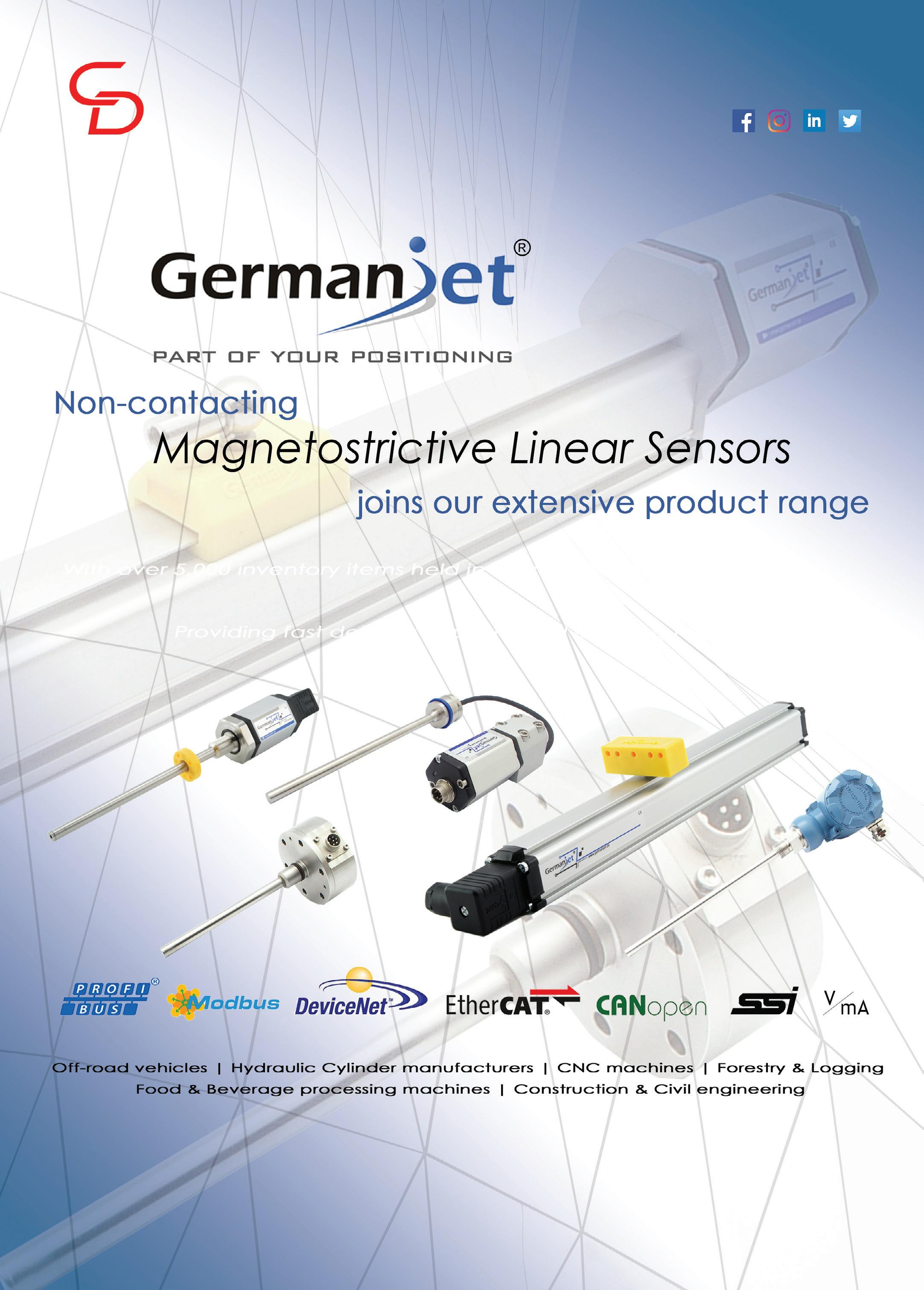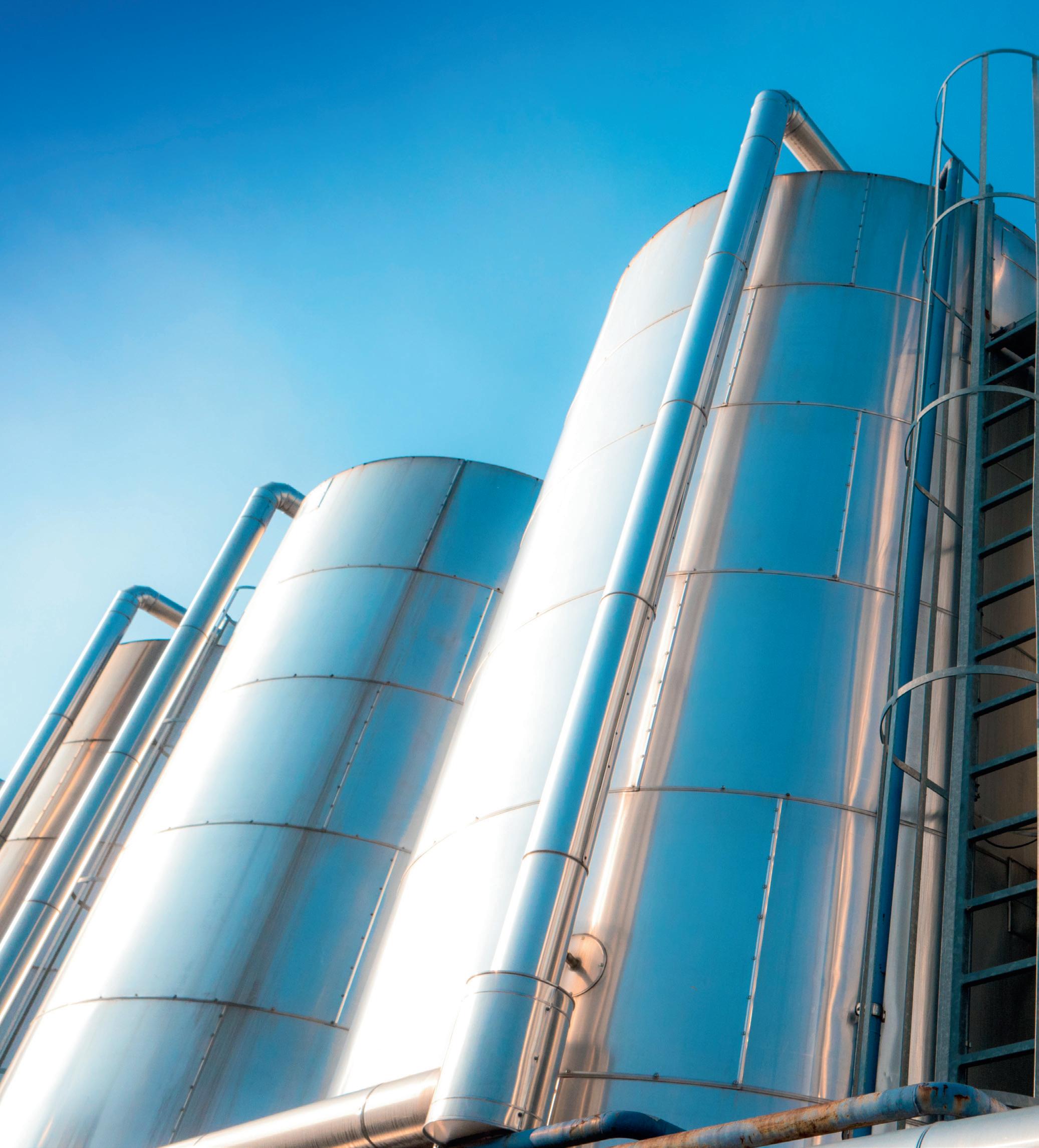
13 minute read
Continuous level measurement is non-contact radar always the answer?
Some instrumentation vendors may offer non-contact radar as the instrument of choice for almost any continuous level measurement scenario, but be careful… For some years now, non-contact radar level instruments have been a popular technology for continuous liquid level measurement, and this is for good reason. There are many benefits to non-contact radar as level sensing technology, not the least of which are: • Accurate readings that are independent of product density. • No contact with the substance being measured, allowing the level measurement of corrosive and toxic liquids. • No moving parts and any risk of fouling is easily mitigated. • Ease of installation and accessibility, typically located at the top of the vessel. • Minimal or no reconfiguration required when changing the contents of the tank.
It is not surprising that some instrumentation vendors may offer non-contact radar as the instrument of choice for almost any continuous level measurement scenario.
But be careful: there are also good reasons not to use noncontact radar instruments, and we shouldn’t forget many of the other well-proven technologies that are available.
Figure 1: The strength of the reflected signal depends on the relative permittivity of the liquid.
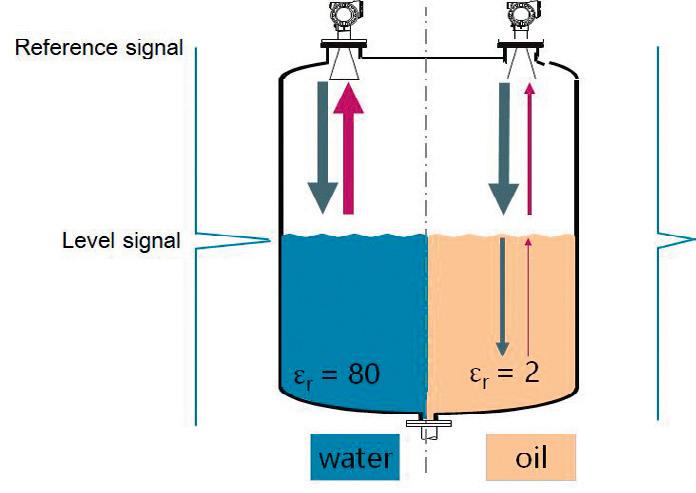
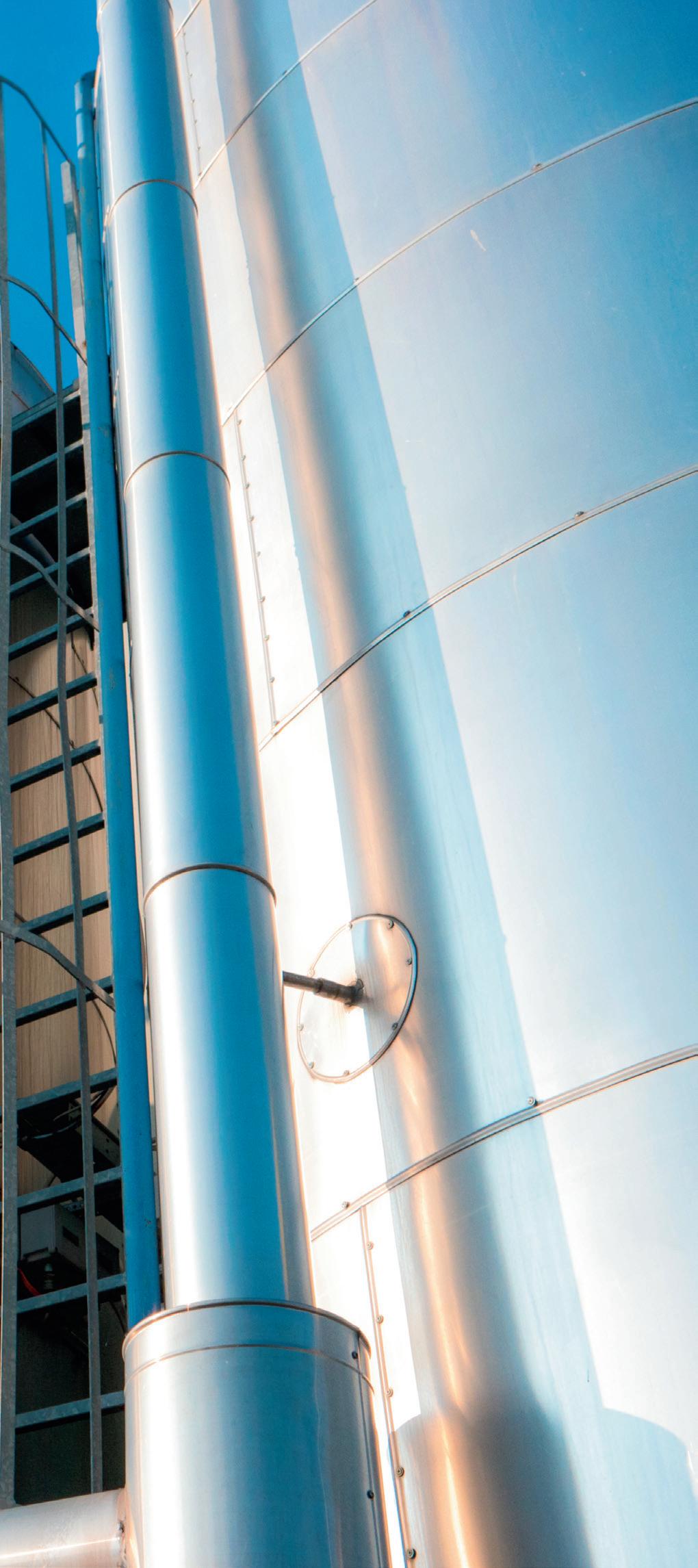
Reflected signal strength The reliability and accuracy of non-contact radar measurement depends on there being a sufficiently strong and interferencefree signal reflected back from the liquid surface. The main factors that impact this are: • The dielectric constant of the medium to be measured. • The distance of propagation above the interface, and the beam width of the instrument. • Foam and other obstructions. • Liquid agitation or vessel-related issues.
When the liquid has a high dielectric constant (such as water, ε r ≈ 80), then the reflected signal at the surface is strong. The power reflection factor at the interface is given by:
© Stock.Adobe.com/au/Photobeps
We love non-contact radar but… Not all situations are well suited to the use of radar instruments: the instrument may perform poorly in some situations or may cost more than alternatives. Success factors The main factors affecting the accuracy of non-contact radar are the relative permittivity of the medium (also known as the dielectric constant) through which the microwave radio signal must propagate (and off which it must reflect), multi-path interference from metal obstructions in the tank and the signal loss due to signal dispersion or other factors such as foam. In the case of water with air above (ε r1 = 1), the reflection ratio is 68.3%, whereas in the case of a low-permittivity liquid such as kerosene (ε r2 = 1.8 at 21°C) the reflection ratio is 2.1%.
It must be remembered that in a non-contact radio situation the radio signal disperses as it approaches the medium and the (weaker) reflected signal is also dispersed as it propagates back. Signal dispersal can have greater effect in large vessels; especially at low liquid fill levels. Foam, agitation, dust or fog on the liquid surface can also reduce the strength of the returned signal.
The effects of weak signal return can be mitigated by the choice of antenna, or using a higher frequency instrument, which narrows the beam, albeit at a higher cost. However, because of the issue of signal dispersal, non-contact radar is limited to simple level measurement and is not recommended to provide reliable multiple interface detection.
The gas phase effect For a time-of-flight measurement to be accurate, the propagation velocity of the transmitted and received signals must be certain. The velocity of radio propagation in a medium is given by:
A complication that can arise is when the gas phase above the medium to be measured has a dielectric constant greater than 1, so that the propagation velocity of the microwave signal can be affected by changes in pressure or temperature. Such situations could arise in cases where the liquid to be measured is a volatile substance emitting vapour.
Figure 2: An example of the effect on propagation velocity of changing temperature and pressure when the gas phase is steam.
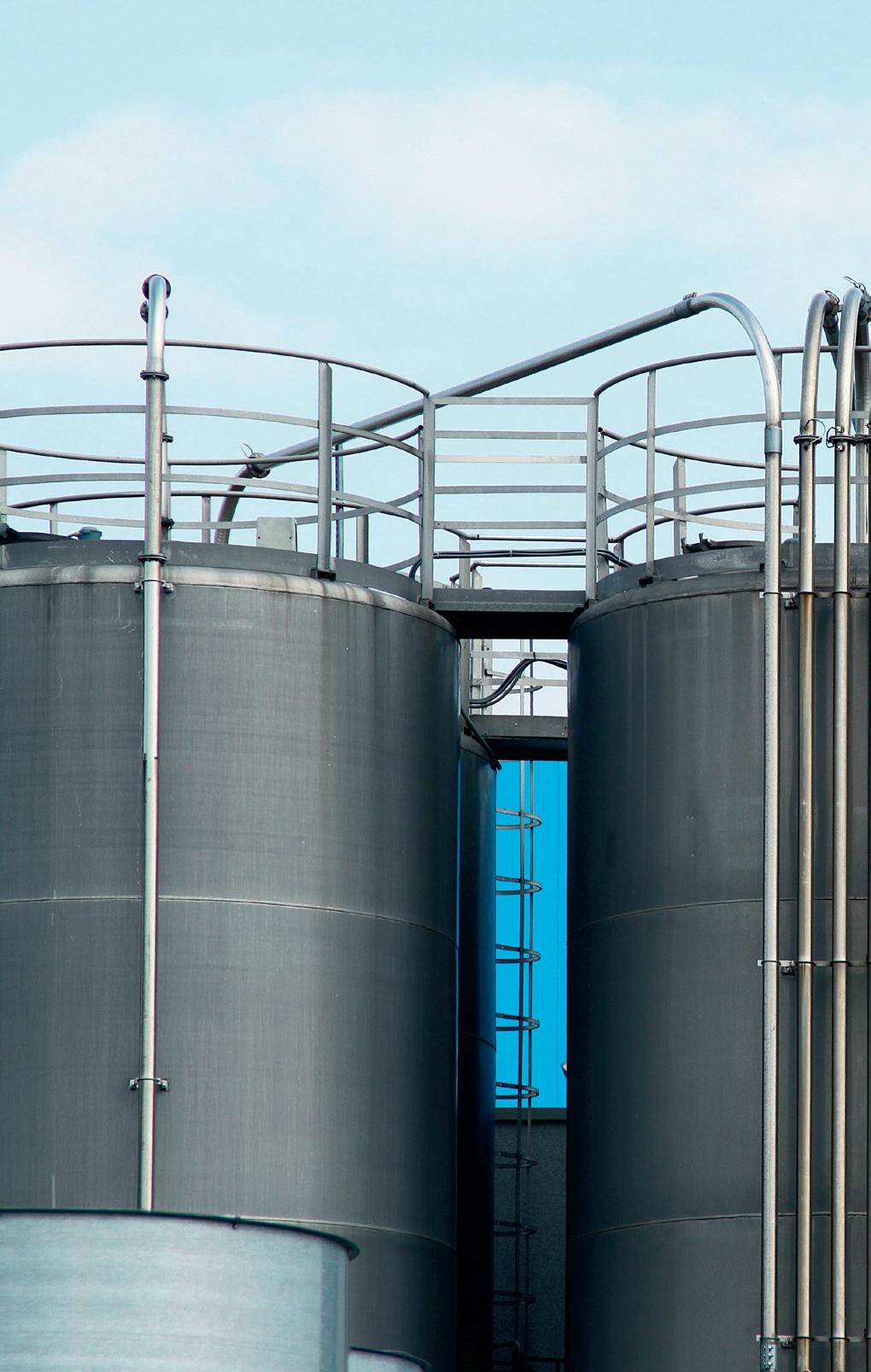

In such cases, not only must the instrument be calibrated accordingly for a lower propagation velocity, but there may also be a need for temperature and pressure compensation applied to the measurement — creating the necessity for additional instrumentation, and additional expense.
Vessel challenges In some cases, the vessel holding the liquid to be measured can present challenges for a non-contact radar instrument. For example, if the vessel contains large metallic obstructions such as stirrers and agitators, it may not be possible to avoid interference, even with a narrow-beam high frequency radar.
Also, if the liquid is subject to frequent disturbance, ripples, bubbles and foam can have an impact on accuracy of the instrument. If a stilling well is to be used, it would need to be carefully designed to avoid internal radar reflection, and a narrow-beam radar would be a must.
There are two ways to achieve a narrower beam width: changing to a higher gain antenna or choosing an instrument with a higher frequency. Typical operating frequencies for non-contact radar are 1, 6, 26 and 80.
Alternative technologies There are a number of continuous level measurement technologies that could be used in place of non-contact radar, many at a lower entry cost.
Guided-wave radar A guide-wave radar (GWR) transmitter works by the same time-offlight principle as a non-contact radar instrument, but has a rod or cable that extends into the tank to ‘guide’ the radar signal. The effect of the waveguide is to almost eliminate the effect of signal dispersal, resulting in a stronger return signal to the transmitter. The fact that the waveguide can reach to the bottom of a vessel (typically up to 45 m), coupled with the stronger return signal, makes GWR instruments suitable for multiple interface detection, which non-contact radar is not recommended for.
For multiple interface detection, ideally the upper liquid should have an ε r of less than 10, making the technology suitable for most applications in the chemical and oil and gas industries.
Disadvantages In multiple interface applications, the interface may not be well defined due to some mixing of the layers, resulting in a ‘rag layer’ that will cause inaccuracy if too thick. GWR instruments are also not suitable for materials that may cause fouling through deposit build-up on the rod or cable.
Ultrasonic Similar to a non-contact radar instrument, ultrasonic level sensors measure the distance between the transducer and the surface using the time-of-flight of an ultrasound pulse to travel from a transducer to the fluid surface and back. Transit times are typically 6 ms/m, but depend on the mixture of gases in the headspace and their temperature.
The main advantages of ultrasonic sensors are their comparative ease of installation and compact size, and the fact that they are not dependent on the liquid being measured, as they are responding only to the difference in density between the liquid and the head space atmosphere. They are best suited to level measurement in water and wastewater applications, as well as some chemical applications.
Ultrasonic devices by design have a vibrating membrane that has a self-cleaning effect to minimise any build-up due to condensation. Disadvantages While the sensor temperature is compensated for (assuming that the sensor is at the same temperature as the air in the headspace), this technology is usually limited to atmospheric pressure measurements in air or nitrogen. Capacitance Like the GWR transmitter, a capacitance transmitter has a probe that extends to the tank bottom and measures the capacitance of material that is in contact with the sensor. It may either be a single rod/cable measuring the capacitance between the probe and the (conductive) vessel wall or it may be a probe within a tube, measuring the capacitance between the two elements, which have a known geometry. As the liquid rises and falls up the probe, the capacitance varies according to the fill level.
© Stock.Adobe.com/au/Photobeps

A second interface can be detected, but only if the lower liquid is conductive. One advantage of using capacitance in interface applications is that it is not affected by emulsions or rag layers. Disadvantages Capacitance probes are not suitable for materials with a low dielectric constant, and while a capacitance probe is not as susceptible to errors due to product build-up, it is highly sensitive to changes in the dielectric constant of the material. The process material conditions therefore need to be assessed to determine whether there can be changes in temperature, moisture content or density that may change the dielectric constant of the material. Differential pressure With differential pressure measurement (DP) the measurement is the difference between total pressure at the bottom of the tank (hydrostatic head pressure of the fluid plus static pressure in the vessel) and the static or head pressure in the vessel. The hydrostatic pressure difference equals the process fluid density multiplied by the height of fluid in the vessel. A vent at the top keeps headspace pressure equal to the atmospheric pressure. Disadvantages If the vessel needs to be closed, the lack of a vent in the headspace means that a second pressure transmitter must be utilised at the top of the tank and the level calculated from the differential between the two transmitter outputs.
Accurate measurements are also dependent on constantly knowing the density of the process fluid, which can often vary with temperature, and so additional temperature compensation must be used. The method also depends on two penetrations of the vessel, and the lower penetration can be a source of leaks. Electromechanical systems For simple level applications, float sensors are a well-tried and proven technology. Floats work on the simple principle of placing a buoyant object with a specific gravity intermediate between those of the process fluid and the headspace vapour into the tank, then attaching a mechanical device to read out its position.
Similar to a float, a displacer is designed to float on a liquid, but can operate submerged, allowing interface level detection, by being calibrated to the specific gravity of the lower fluid. Disadvantages With floats and displacers, getting the actual reading can sometimes be problematic. Many systems utilise mechanical components such as cables, tapes, pulleys and gears to communicate level; however, magnet-equipped floats can help alleviate some of these difficulties. Additional problems can be caused by agitation of the fluid — making a stilling well necessary — or if the fluid tends to coat the float, impacting its ability to float on the surface. Radiometric systems Radiometric level measurement systems work by placing a radioactive source on one side of a vessel and measuring the radiation reaching the other side of the vessel. A measurement of the level of the substance within the vessel is obtained since the substance will attenuate the signal reaching the radiation detector on the other side.
Radiometric systems utilise gamma rays from a source such as Cesium-137, and since the gamma radiation can pass through the walls of the vessel, require no penetration of the vessel or contact with the liquid inside. This makes them suitable for measuring extremely hot, toxic or corrosive substances that would damage other types of instruments. Disadvantages The main disadvantage of radiometric systems is their high cost, not only in procurement, but also in maintenance and disposal. Being dependent on a radiation source, they are ‘always on’ and appropriate safety measures must be taken in the handling of the radiation source. They therefore tend to be used where no other technology is suitable for dealing with the process conditions.
Conclusion While not exhaustive, the above describes a number of liquid level measurement technologies — well established in the marketplace — that can offer an alternative to non-contact radar instruments.
While in many cases non-contact radar is an excellent technology for liquid level measurement, one should be careful about suggestions that the technology may be suitable in all cases: there are situations in which other alternatives can be more effective, or will achieve the same result. Finding the most effective technology for the application may require expert help from a trusted supplier with experience in all available technologies.

GAS ULTRASONIC FLOW METER TRANSDUCER Emerson has released the Daniel T-200, a titanium-housed transducer, for its gas ultrasonic flow meter product line, utilising metal 3D printing to enhance the acoustic performance of ultrasonic flow meters in custody transfer applications.
Ultrasonic signal quality and strength are critical to measurement accuracy, which is paramount in custody transfer applications. To boost signal strength through the titanium housing, the T-200 uses a metal 3D-printed mini horn array, which consists of an intricate geometrical structure of titanium horns and a titanium diaphragm that acts as a harmonic oscillator and matching layer. This maximises the sound energy coupled into the gas, which improves the signal-to-noise ratio and accuracy of the measurement.
The meter’s all-metal housing provides a barrier from corrosive hydrocarbon fluids and wet gas, thereby extending the life of transducer components and ensuring stable performance. This design allows the meter to be hydrotested with transducers in place, steam cleaned while in the operating line and blown down with no limits on the rate at which the meter can be depressurised.
The T-200 can also be safely extracted while the meter is under pressure without special high-pressure extraction tools, which reduces the possibility of greenhouse gas emissions during extraction. The capsule which contains the piezoelectric crystal is retractable as a single piece for simplicity and ease of use.
The T-200 is rated for a wide range of operating conditions, including pressures from 15 psig/103 kPa to 3750 psig/25,855 kPa and temperatures up to 125°C.
Emerson Automation Solutions
www.emerson.com/au/automation
ETHERCAT SERVO DRIVE Trio Motion has released an EtherCAT servo drive that can be integrated with an existing motion control system. The DX4 drive is designed to be compact in size but also to have power ranges capable of driving many different motor configurations.
The drive has standard inputs and outputs with an additional encoder input for secondary feedback. It can be used with motors with high feedback or Trio’s servomotors, which have 20-bit incremental and 23-bit absolute feedback options available. This makes it suitable for a wide range of applications that require high precision.
Users can integrate it with their own EtherCAT master control or integrate it with a complete Trio Motion system.
Motion Technologies Pty Ltd
www.motiontech.com.au
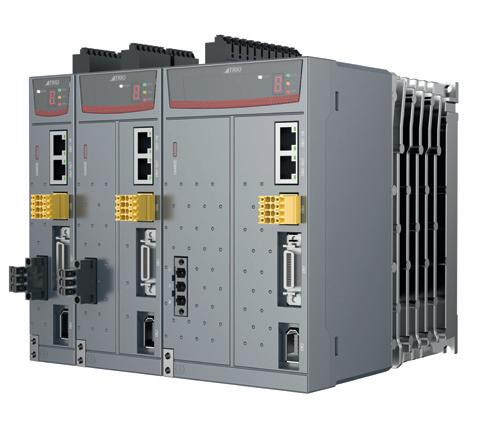
HANDHELD VIDEOSCOPE The Olympus IPLEX GL 3.5 m x 6 mm handheld videoscope is lightweight and portable, making it suitable for all challenging working environments. It has a remote visual inspection tool and high image quality that helps get inspections tasks done easier and with precision. It is available to rent from Tech Rentals.
The device also lets users screen-share wirelessly to send live inspection images and video to smartphone and tablets.
Its PulsarPic image processer constantly optimises images by reducing halation, balancing exposure and improving gain quality. The LED light on the videoscope is also twice as bright as its predecessor, helping to locate problems and defects in dark areas with greater accuracy. Users can also record moving objects clearly and stutter-free with the device’s high frame rate (50 fps).
TechRentals
www.techrentals.com.au
